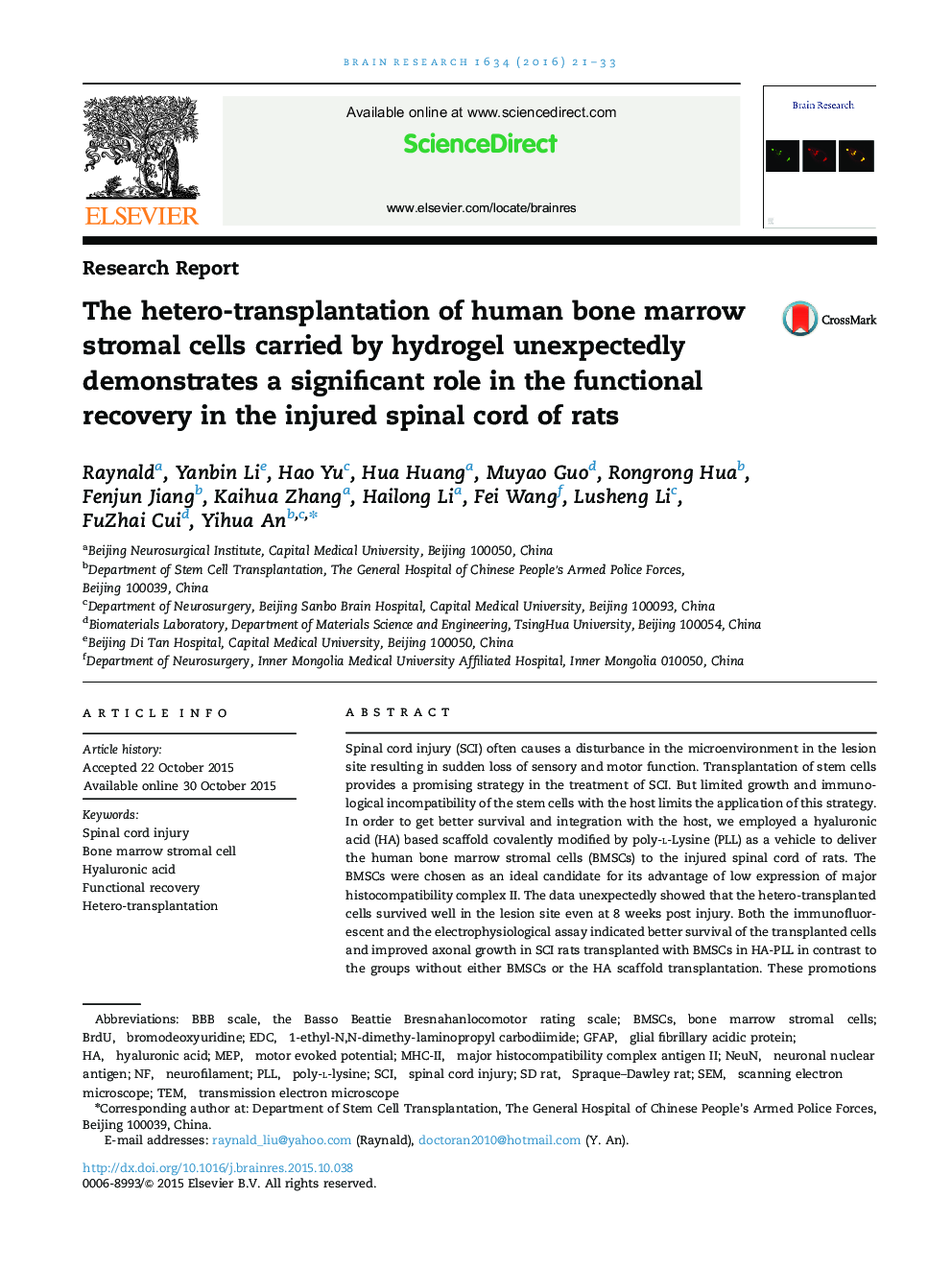| Article ID | Journal | Published Year | Pages | File Type |
|---|---|---|---|---|
| 4323673 | Brain Research | 2016 | 13 Pages |
•1、HA-PLL can facilitate cell adhesion as a vehicle to deliver the hBMSCs•2、The hetero-transplanted cells survived in vivo even at 8 weeks post injury•3、HA-PLL delivered hBMSCs promoted the regeneration of axons in the SCI rats•4、HA-PLL delivered hBMSCs improved the locomotor function in SCI
Spinal cord injury (SCI) often causes a disturbance in the microenvironment in the lesion site resulting in sudden loss of sensory and motor function. Transplantation of stem cells provides a promising strategy in the treatment of SCI. But limited growth and immunological incompatibility of the stem cells with the host limits the application of this strategy. In order to get better survival and integration with the host, we employed a hyaluronic acid (HA) based scaffold covalently modified by poly-l-Lysine (PLL) as a vehicle to deliver the human bone marrow stromal cells (BMSCs) to the injured spinal cord of rats. The BMSCs were chosen as an ideal candidate for its advantage of low expression of major histocompatibility complex II. The data unexpectedly showed that the hetero-transplanted cells survived well in the lesion site even at 8 weeks post injury. Both the immunofluorescent and the electrophysiological assay indicated better survival of the transplanted cells and improved axonal growth in SCI rats transplanted with BMSCs in HA-PLL in contrast to the groups without either BMSCs or the HA scaffold transplantation. These promotions may account for the functional recovery assessed by Basso–Beattie–Bresnahan (BBB) locomotor rating scale in the HA-PLL seeded with BMSCs group. These data suggests that hetero-transplantation of human BMSCs delivered by HA scaffold demonstrates a significant role in the functional recovery in the injured spinal cord of rats.
